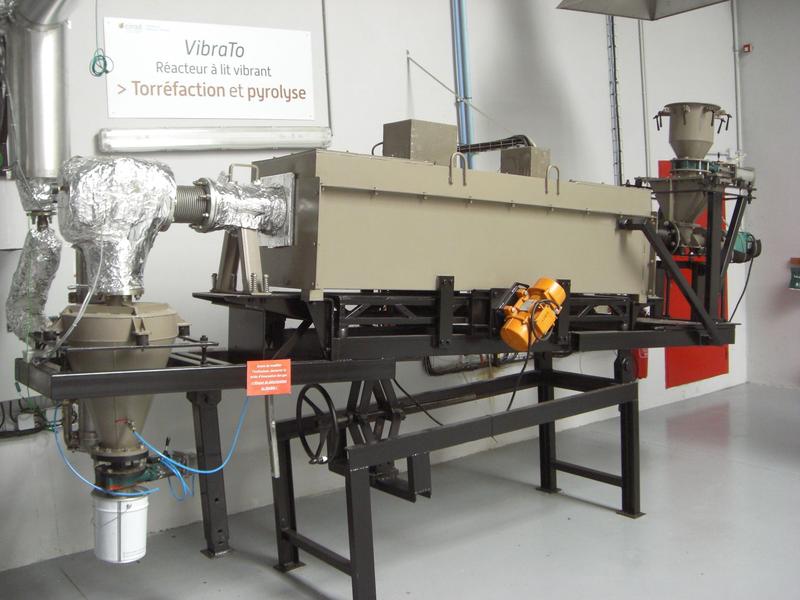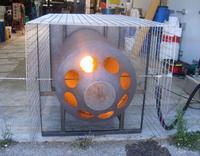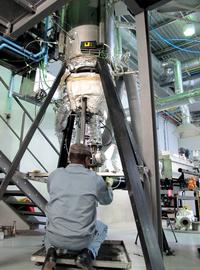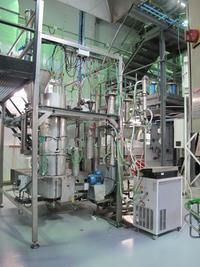Pilot-scale reactors
Last update: 8 March 2023
Vibrato
The torrefaction pilot is a vibrating bed reactor in which the tubular furnace has three independently regulated, electrically heated zones. It is a continuous reactor with a maximum feed rate of 2 to 5 kg/h depending on the type of resource used. Conversion can be carried out in an inert gas flow.
The reaction gases are maintained at reaction temperature while flowing through a cyclone for the removal of particle matters. Hot gases then pass through a condensation line to collect the condensable fraction, which will be further analysed by GC-MS. The non-condensable gases are continuously analysed by gas chromatography (GC).
Engine test bench
The engine test bench is able to reproduce all types of operating conditions and normalized thermodynamic cycles.
It is located in a ventilated sound-proof chamber, where no vibration propagation to the building can occur. It is equipped with a high-frequency data acquisition system.
Burner test bench
This is a test bench for liquid or gas fuel burners. The dissipated power range is 15 to 250 kW. It is equipped with a data acquisition system as well as a continuous flue gas analysis system.
LiF'X
This continuous fixed-bed reactor is designed to reproduce the char gasification zone of staged gasification reactors. It has a 200 mm interior diameter and is 1 metre high, and has a continuous feed system with a char feeding rate ranging from 2 to 6 kg/h. The atmosphere in the reactor is provided by propane burner flue gas as well as a superheated steam generator, to ensure accurate temperature control (up to 1100°C), steam partial pressure (0 to 100%) and oxygen partial pressure (0 to 21%).
The instrumentation is the key element of this device: sampling and measuring points are positioned every 10 cm along the reactor height so that complete thermal and chemical mapping of the reactor bed can be achieved.
LiF’X also enables biomass pyrolysis studies in a continuous fixed bed. The type of atmosphere, as well as the temperature level, can be adapted to this use. The biomass pyrolysis zone of the staged and fixed-bed gasification process can thus be reproduced and studied too.
Pyralyz
This pilot is a dense fluidized-bed reactor heated to 450-500°C at a high heating rate (residence time < 2 s.) to perform a flash pyrolysis reaction. The reactor is equipped with a continuous feed system with well controlled biomass flow ranging from 1 to 2 kg/h depending on the resource used. A nitrogen flow ensures fluidization of the bed. Char particles are separated from flue gases by two cyclones arranged in series. Then, hot gases are cooled down in a condenser to collect the condensable fraction (bio-oil) while the non-condensable gases are continuously analysed by micro-GC. In an industrial-scale reactor, char and fuel gas would be recycled and burnt to provide the energy needed for the whole process.
Pyralyz enables testing of a wide range of biomass (wood, agricultural residues, dedicated crops, etc.) and a comparison of bio-oil yields and quality. A novel condensation system for the fractionation of bio-oils into a dense organic phase and a diluted aqueous phase is being studied.
See the video aside.
Last update: 8 March 2023




